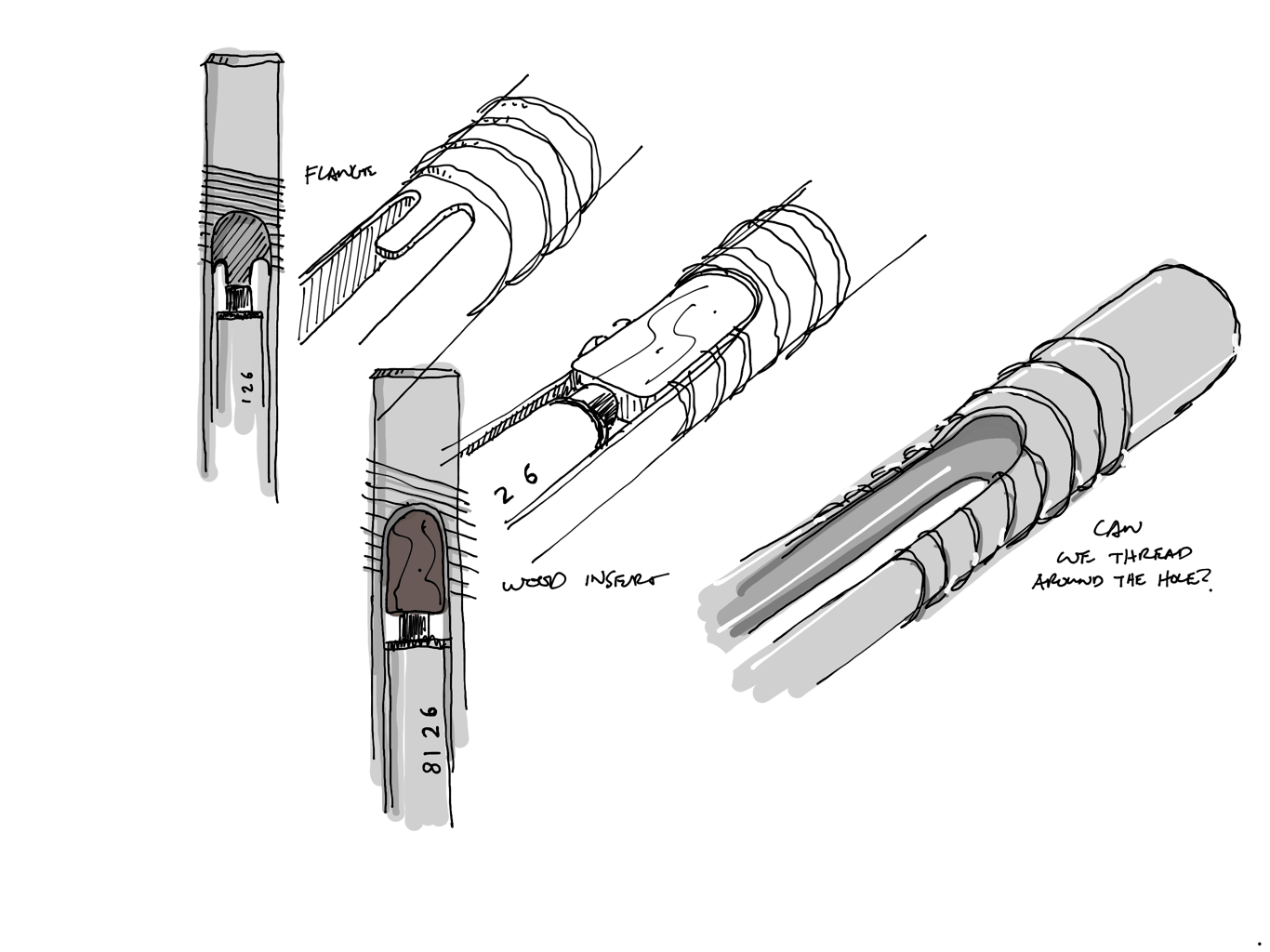I Can Do That: What Does an Industrial Designer Do?
We spoke with an industrial designer to learn about their career path and what it takes to thrive in the field. Find out what it takes and how to design your future.

In a way, you could say industrial designers are responsible for the look and feel of, well, just about everything.
That’s because they design many of the objects that we interact with every day. From our smartphones and laptops to our desks and office chairs and backpacks to our toothbrushes and vacuums and headphones and beyond, industrial designers are a constant presence in our lives.
Yet, for its ubiquity, it’s not a well-known discipline. This is especially so among young learners who, as we know, are among the most creative and curious people out there. To help us understand what industrial design is and how young people can get involved, we spoke to XQ friend, Sean Kelly.

Sean Kelly is the lead designer at Grovemade, the-cofounder of Circle Media Labs, Inc., and an industrial design mentor at the high school and college level. He lives in Portland, OR, with his wife, daughter, and dog, Ollie. In no particular order, some of his favorite things are ramen, Dieter Rams, and channeling his inner-architect through the perfecting of his mid-century house.
Hi, Sean! Welcome to “I Can Do That!” Can you tell us a little about yourself? Your name. What you do. What you’re working on.
My name is Sean Kelly and I work for Grovemade. I’ve been working there for almost 10 years now, ever since college. I’m the lead designer here, so that means I design the products and work with the research and development team to bring ideas to life. I do a lot of sketching, physical model-making, and ideating, which is taking an idea and creating many, many versions of that idea.
Where can you find the impact of industrial design?
Industrial design exists everywhere. In almost everything we touch and interact with on a daily basis, industrial design or some sort of design is a part of that. You know, that’s how it came into being, and there are people everywhere making all sorts of things. It surrounds us. What’s fun about it is you can touch it from many different angles and you can be a part of many different things using the same techniques to create almost anything.
When did you become interested in industrial design?
I discovered product design basically because of my mom. She received an email from the University of Oregon talking about things that were happening at the school. In it, she saw a link to this program that was starting and she forwarded it to me and it seemed like exactly what I wanted to do. So I dropped everything I was working on and shifted my college focus from architecture to product design.
College took me everywhere from art history to the history of design. I took sculpture classes and drawing classes. Architecture and color theory (more like color facts). I had a class which was entirely about chairs. What really hooked me was learning about how things are made, now everywhere I go I can’t help looking at things and trying to determine what manufacturing process was used to make them.
The core skills of design and the design process were the most valuable practical things I learned in school. Research, Drawing, Model Making, Computer Drafting. I am obsessed with the process of design and how it continues to change as I continue to learn more and more.
It just shows you how important it is for families to be interested and involved in their students’ lives.
Yeah, and it’s funny. My mom did it again when she sent me an article about Ken [Tomita, co-founder, and CEO of Grovemade] when I was looking for internships during my last year of school. I wanted to do some furniture work, so she sent me Ken’s email. I emailed him about doing furniture, but then he was like “Oh, I’m not doing furniture. I’m doing Grove. If you want to sand bamboo iPhone cases, you can come in and interview.” So I came in, and now I’ve been here for 10 years, which is amazing to me.
What were some experiences you had as a high school student that prepared you for the degree you pursued?
I think some of the most valuable parts of high school to me were when professionals came and talked to my mechanical drafting class. The teacher would have professional architects and professional designers come in to talk to the students about what they did and how they did it, and how they got to where they were. I think that always really intrigued me. I always wanted to be an architect because my grandpa was an architect, and I just thought it was so cool and I always loved buildings and spaces. And in high school, I was lucky to have electives that fed that.
You’ve been active in teaching young people both in your role at Grovemade and in the community—can you walk us through what motivates you.
I think part of it stems from when I was younger, one of my first career aspirations was to become a teacher of some kind. Once I started my career, I was able to reflect on my experience—going back through high school and through college and even before that, and realizing where I may have been better served or what I didn’t know and what I wish somebody would’ve told me when I was younger.
I was fortunate to get the opportunity to take those thoughts and apply them back to high school and college students. So, you know, I made some mistakes and I had some failures and I had some successes, and all those pooled together gave me experiences I could then use to help those students. I could see through some of the stuff that they’re looking at and show them that there are paths that they can take. It’s not a wall that’s blocking them, or you know, this deep dark forest that they’re stuck in the middle of.
You have options and opportunities inside of you. You have the skills to get through anything. It’s just a matter of unlocking those skills and then figuring out the best way to apply them.
If a young person were interested in developing their skills in this field, what resources would you recommend?
Kids are pretty lucky these days because they have so much access to information and it’s so quick. I think when I was younger, working through projects in CAD [computer-assisted design] in high school was all about utilizing the textbook. Like this huge thick textbook. Man, it seems so dated. That wasn’t that long ago, but you know, now with YouTube, you can watch tutorials on certain things. There are endless resources that can teach you how to use design techniques to create products. I think just not being afraid to just try things and fail, try things and fail, you know. I mean, how many light bulbs did Edison create before he got the one that did work? I forget the exact number, but it was a lot.
I just looked it up. Edison made 1,000 unsuccessful attempts with his lightbulb and was quoted as saying, “I didn’t fail 1,000 times. The lightbulb was an invention with 1,000 steps.”
That aligns with my thinking that if you like something and you enjoy something, try to do more of it, or try to go deeper with it instead of, you know, just doing it sometimes or doing it once. If something really moves you and you feel really deeply about it, keep pursuing that and see how far it’ll go. Otherwise if you don’t, you’ll never know.
For younger students I would suggest looking into what electives or extra curricular activities their schools offer. Art classes are a great way to begin learning about creating things. Of course you can also do stuff on your own and there are plenty of great resources online and in books. I would also recommend trying to find internships or apprenticeships during summer breaks. Get involved in the local art community or find someone who has a creative arts career that you could shadow.
Maybe you have this one thing you really liked and you just decided that you had to do this other thing that was sort of more in line with what people wanted you to do, and not necessarily what you wanted for yourself. So if you have the ability to apply yourself to those things that you really like, apply yourself deeply and see what happens there.
Industrial designers are rarely in the limelight—people like Jony Ive, the Eames, Dieter Rams, are an exception—why should someone consider this as a career?
There are those people who want to be the quote-unquote “super designers.” You know, the ones who everybody knows. I just like working with my hands and solving problems every day. And once you find a good team or a good group of people or you find a project that you’re really passionate about, just kind of holding onto that and giving it your all. And who cares if people know it’s you? People are going to enjoy the fruits of your labor even if they know who you are or not. And that’s sort of the point—you want to create something that people need and that they’ll use and that they’ll enjoy for however long they have it, or however long they need it. And aside from that, you just need to do good work, and then that’ll speak for itself.
What do teachers need to know to help teach industrial design to teenaged learners?
I think Mr. Rogers did it really well. You know, it’s not a classroom, but he took us places that we would’ve never seen. This relates to how things are made, not necessarily the design of the object but how it’s actually made. And that’s just the step after design. If you can show a student the whole cycle—from when the idea is in your head or whether it’s this random inspiration, and then it goes all the way from idea through this crazy journey and then it arrives in the student’s hands. So if you could hand a student an object and then show them what it took for that thing to exist, I think that’s a really cool thing.
And then there’s the whole social-cultural aspect of it, how years and years of humanity built up to the moment that that thing was made, and then that thing begets more things and other things and new things, and it stems off into so many other possibilities.
It can be as simple as teaching them about a specific person or teaching them about a specific thing or teaching them about the industrial revolution. We talk about that in high school, you know, in high school history class. But we can go further and ask what did people make, and how did they make them, and why is that important and how has that changed the way we view the world, and how is it still relevant now? You could show them how their clothes are made. You could show them how their textbooks are made. The desks they’re sitting at. The building they’re sitting in. Their iPhones in their pockets. And show them that they can make those things too. You know, it just takes practice and it takes an idea, and usually a group of people, not always just one person.
There’s a lot that goes into taking an idea and making it real. I think school is a great place to be a part of things like that because you have this group of people that can come together and do projects and create things. There’s always an opportunity to learn and grow. And amazing things can happen when you bring in these other aspects that aren’t necessarily the traditional educational model, you know, of the standard topics that people learn in school. But then you find out those standard topics apply to something else entirely. It’s just a matter of connecting those two things, you know?
It all comes back around. Like all of a sudden, 10 years after high school, or you know almost 20 years now, it’s like oh, I need that. I’m using that right now. It’s crazy.
What’s the best advice you’ve received? And what advice do you have for young people out there?
Someone once told me: “You’re overthinking it. Don’t be afraid to keep going, to keep moving forward. Don’t be afraid to turn a corner.”
Sometimes people feel like they’re stuck at a dead-end, but really, you know, there aren’t really any dead ends. It’s just a corner that you have to turn and then you can see the path in front of you again.
I think that’s a big thing for me when I get stuck or when I feel down or I feel like I’m not good enough or I can’t do this, all I have to do is turn. You know, change my perspective, or keep working at it, to just keep going and see where it leads.
And sometimes it just leads to the next thing, and that’s not a dead end. It’s just the next thing on the path. So being aware of that and being aware of when you feel stuck and knowing that you’re not and that you should just keep going. There really aren’t any limits unless you test them.
I wish I would’ve known that when I was younger because I felt stuck a lot in school, you know? And I would be sitting at home with my face in my hands trying to do my homework and it just wasn’t working. I should’ve changed my perspective, or I should’ve tried a different angle, you know? Kept moving.
As we continue our conversations with makers and doers in the real world, the importance of hands-on learning at an early age couldn’t be more clear. The things important to people like Sean—curiosity, an eagerness to examine the world from numerous angles, a desire for knowledge and lifelong learning—also align with both the XQ Design Principles and XQ Learner Goals. Combined, those principles and goals are designed to help develop students who are deeply engaged in their own learning and fully prepared for all that the future has to offer. When we commit to provide students with opportunities to engage with and learn from experts and community partners, those experiences serve as points of inspiration and potential entryways to their paths in high school, college, and beyond.









